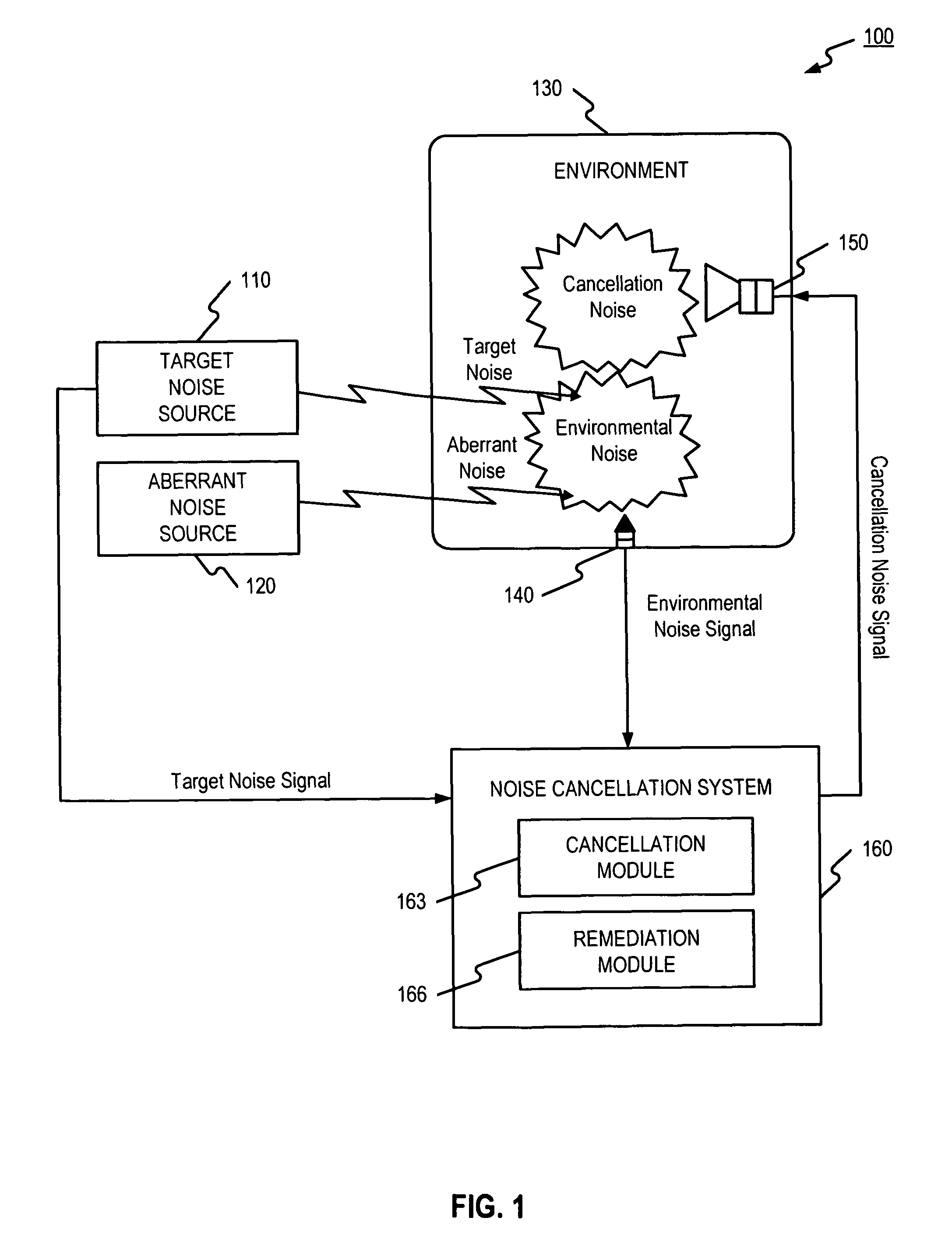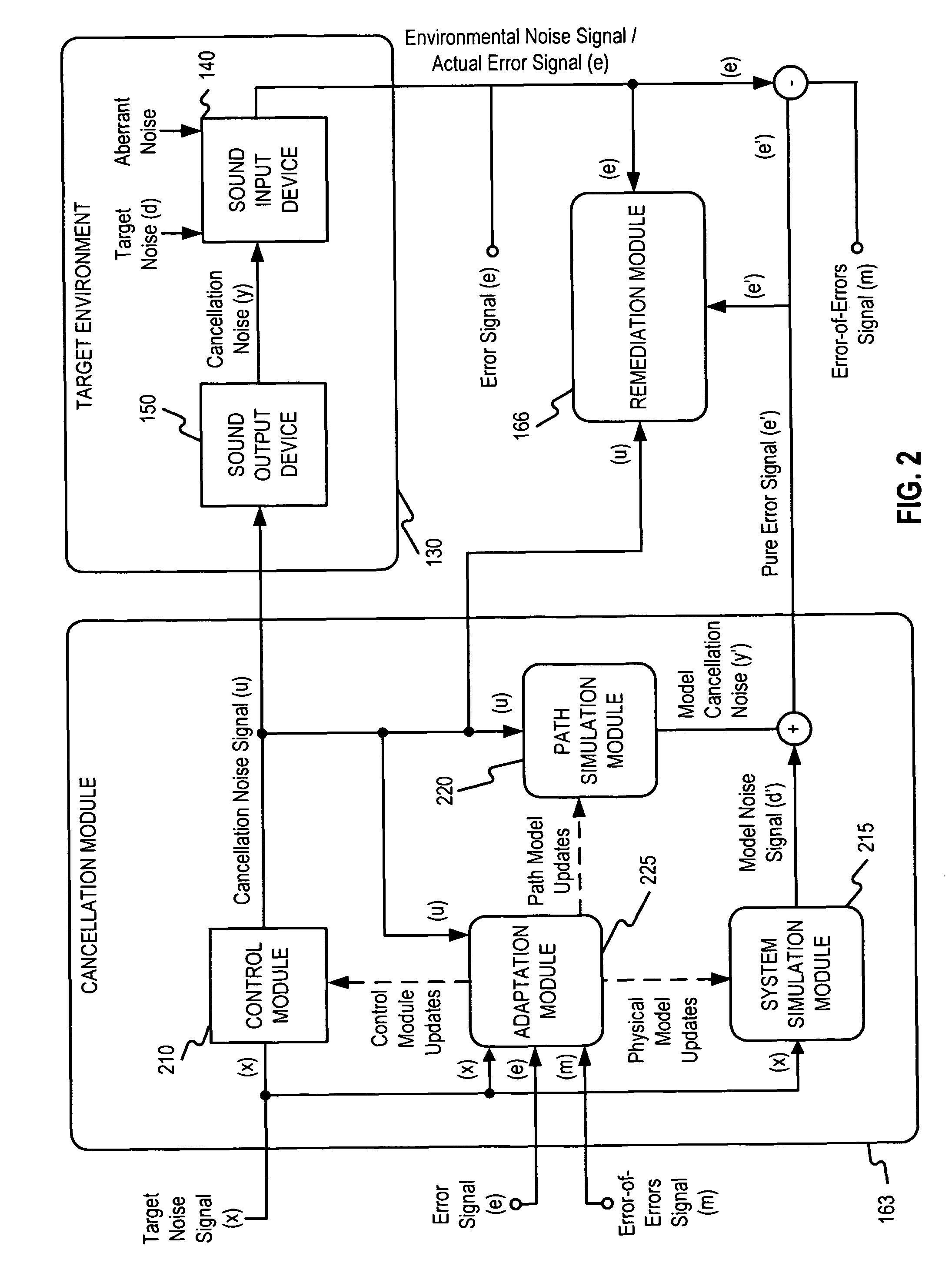Methods and systems for determining the effectiveness of active noise cancellation
a noise cancellation and active technology, applied in the field of environmental control, can solve the problems of affecting the determination accuracy of divergence prediction devices, affecting the accuracy of noise cancellation systems, and increasing the noise in the environmen
- Summary
- Abstract
- Description
- Claims
- Application Information
AI Technical Summary
Benefits of technology
Problems solved by technology
Method used
Image
Examples
Embodiment Construction
[0014]FIG. 1 is a block diagram illustrating an exemplary system 100 that may benefit from some embodiments of the present disclosure. Exemplary system 100 may be, for instance, a vehicle equipped with an active noise cancellation system for cancelling noises in the vehicle's passenger compartment. However, any environment where noise may be present may benefit from some embodiments of the present invention. As shown in FIG. 1, system 100 may include a target noise source 110, an aberrant noise source 120, an environment 130, a sound input device 140, a sound output device 150, and a noise cancellation system 160.
[0015]Target noise source 110 may be an object or event that generates an unwanted target noise present in environment 130 and contributes to environment noise. Target noise source 110 may be located either inside or outside the defined environment 130, and in some cases, the target noise produced by target noise source 110 may be periodic or cyclical. A target noise signal...
PUM
 Login to View More
Login to View More Abstract
Description
Claims
Application Information
 Login to View More
Login to View More - R&D
- Intellectual Property
- Life Sciences
- Materials
- Tech Scout
- Unparalleled Data Quality
- Higher Quality Content
- 60% Fewer Hallucinations
Browse by: Latest US Patents, China's latest patents, Technical Efficacy Thesaurus, Application Domain, Technology Topic, Popular Technical Reports.
© 2025 PatSnap. All rights reserved.Legal|Privacy policy|Modern Slavery Act Transparency Statement|Sitemap|About US| Contact US: help@patsnap.com



